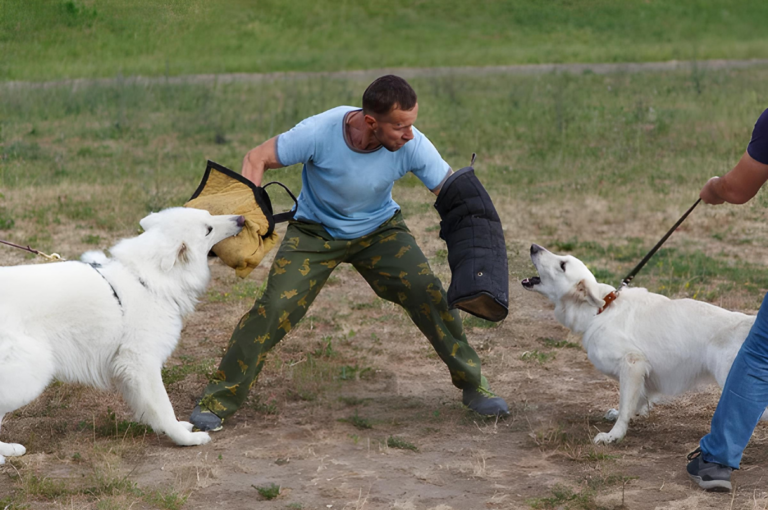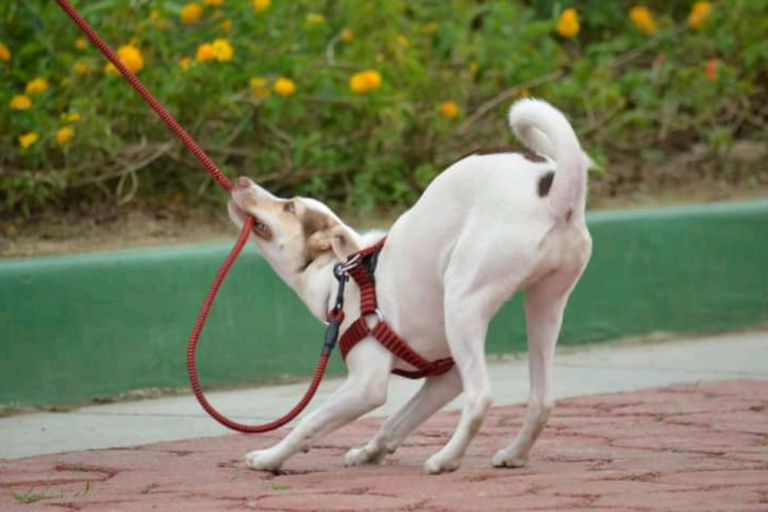Training for Dogs with Physical Disabilities: A Guide to Helping Your Pup Thrive

Training dogs is not the same as training children: it may picture overly-enthusiastic dogs leaping through hoops or running after balls. However, for dogs with physical disabilities, it may prove quite different and they should be trained carefully, without haste.
Regardless of whether your dog was born with a physical disability, or one has been gradually acquired over time, your dog is every bit as capable of learning new skills, becoming more independent, and leading a happy and fulfilling life as any dog without the condition.
In this section, you will find some helpful advice on raising physically disabled puppies and teaching them various commands.
Getting to Know Your Pup’s Special Needs

Even if two dogs are of the same breed, age and sex, no two dogs with disabilities are alike and what was effective with another dog may not be effective with the other. Some of the dogs pulled on a leash may not be able to walk well; some may be blind or dealing with deafness.
The first step in training is determining the type of disability and the impact it has on their learning capacity and functioning. It is advisable to seek the help of your veterinarian or a dog trainer who has experience working with disabled dogs to come up with an effective plan.
Tip: It is also important to pay attention to the way in which your dog behaves and especially how it is able to move around in order that you may be able to know how restricted or how capable the dog is.
Patience and Pawsitivity: Setting Goals for Your Dog
Most, if not all, dogs need to be trained and this can take time, but it is even more challenging where the dog has a disability. Learning could be slower, things which other dog breeds can easily accomplish, might take ‘age’ to complete.
Always set measurable and realistic goals for your dog and work slowly towards achieving them so that you are able to cover each aspect and celebrate when you achieve it. Schedule the training frequently but for only a limited duration so that they do not get overburdened.
Tailoring Training for Your Dog’s Unique Abilities
Training such a dog entails changing the conventional procedures that are used in training dogs. When training a dog that has mobility problems, it is advisable to take short sessions to avoid tiring the pet and use ramps or soft ground for easy movement of the dog.
For the blind dogs, use more of the vocal stimulus and the tactile stimulus. In case of deaf dogs one should use signals with hands and highlight some important moments with visual aids.
Here are a few examples:
🐾 Blind dogs: Use consistent verbal cues or a unique scent for each command.
🐾 Deaf dogs: Teach hand signals for basic commands like sit, stay, and come.
🐾 Dogs with mobility challenges: Focus on low-impact exercises like gentle stretching and mental stimulation.
Doggy Gear: The Right Tools for the Job
Positive reinforcement and effective methods in training should be s properly equipped so as to have a positive influence on the dog. However, there are a variety of specially developed tools accessible for physically or mentally handicapped dogs. In this case, dogs suffering from limited mobility can be given supports such as wheelchairs or harnesses. In the case of blind dogs it helps the animal to have textured mats or scented markers that would help it perceive space around the house.
Tip: They should be trained to use clickers, hand signals, or even vibration collars for communication with the hearing impaired dogs.
Exercising the Mind: Brain Games for Your Special Pup

But, mental training is equally as beneficial for dogs with physical constraints as physical training is for any person. You can feed their brain with puzzle toys, treat-dispensing games, and scent-based activities can be among the best to engage them.
These activities are enlightening and at the same time ensure that they exercise without too much stress on their frail bodies.
Paws Up! Building Confidence Through Rewards
Like any other dog, it is important to appreciate and apply positive reinforcements towards the disabled ones. Bribery by use of treats, praise or affection should be given to the kids once they have accomplished a task for them to understand they are being rewarded for a reason.
It is crucial to build up the confidence in your dog because this helps them to overcome different obstacles quickly, remember that practice makes progress and it is never too late to learn something new!
Calling in the Pros: Trainers Who Know Their Stuff
While many dog owners can handle basic training at home, working with a professional trainer who has experience with disabled dogs can be incredibly beneficial. A trainer can provide tailored guidance and show you advanced techniques that fit your dog’s specific needs.
Whether it’s mobility assistance or advanced communication cues, professional trainers can make a big difference in your dog’s development.
Helping Your Pup Live Their Best Life!
Training a dog with a physical disability takes time, creativity, and lots of patience. With the right approach, you can help your dog lead a happy, fulfilling life filled with new skills and independence. By adapting training techniques, using supportive tools, and focusing on mental enrichment, you’ll create a nurturing environment where your dog can thrive.
Every dog, regardless of ability, deserves the chance to learn and grow. With your love and guidance, they can overcome any challenge and enjoy a rich, joyful life.






